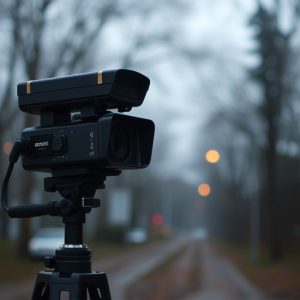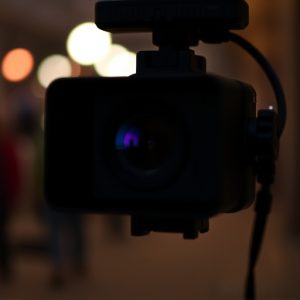Unmasking Hidden Cameras: Light Reflection for Spy Camera Detection
Understanding Spy Camera Detection's Light Reflection Technique leverages optics to uncover hid…….
Understanding Spy Camera Detection's Light Reflection Technique leverages optics to uncover hidden cameras, especially nanny cams, by analyzing unique reflection patterns caused by camera lenses. This non-intrusive method involves directing light sources towards potential hiding spots, such as TVs, clocks, and potted plants, making it effective for security and professional investigations. By staying vigilant and observing light reflections and shadows, one can identify and disable hidden cameras, preventing trust violations and safeguarding privacy in homes or offices. Strategically positioning lighting fixtures and reflective surfaces can also disrupt camera operation, ensuring better privacy protection.
Uncover hidden threats with our guide to spy camera detection using light reflection techniques. Learn how to identify potentially harmful nanny cams hidden in plain sight, understanding their common placement strategies and leveraging visual cues. Discover the science behind reflecting light to expose covert cameras, and gain essential tips for preventing and countering spy camera placement. Stay informed and safe by knowing where to hide nanny cams effectively.
- Understanding Spy Camera Detection: The Light Reflection Technique
- Common Hiding Spots for Nanny Cams: A Comprehensive Guide
- How the Reflection Method Works in Uncovering Hidden Cameras
- Visual Clues: Identifying Potential Camera Locations
- Preventing and Countering Spy Camera Placement Strategies
Understanding Spy Camera Detection: The Light Reflection Technique
Understanding Spy Camera Detection: The Light Reflection Technique involves utilizing light reflections to uncover hidden cameras, particularly those strategically placed nanny cams. This method leverages the principles of optics and light behavior to reveal devices that might be disguised or concealed. By directing a specific light source towards potential hiding spots, such as corners, gaps, or surfaces with reflective properties, any camera lens will reflect light back, creating a unique pattern or signature that can be analyzed.
This technique is particularly useful when investigating where to hide nanny cams, as it allows for non-intrusive and discreet monitoring. The reflected light patterns can be identified by trained eyes or through specialized equipment, helping to locate hidden camera lenses and disrupt surveillance operations. This method has proven effective in various scenarios, from home security to professional investigations, ensuring that privacy is maintained and potential violations of trust are exposed.
Common Hiding Spots for Nanny Cams: A Comprehensive Guide
Nanny cams, or hidden surveillance cameras, are often placed in strategic locations to capture footage discreetly. Common hiding spots include areas with frequent movement and those that offer a clear view of activities within a room or space. For instance, electronic devices like TVs, clocks, and speakers can serve as perfect cover due to their everyday presence and proximity to where people gather. Additionally, ceiling-mounted fixtures, such as light switches or vents, are popular choices as they blend seamlessly into the environment, allowing for unobtrusive monitoring.
Furniture items like bookcases, potted plants, and decorative objects can also be utilized to conceal cameras. These everyday items provide both camouflage and a distraction from the true purpose of the device. It’s important to note that while these spots are commonly used, creative and out-of-the-box thinking can lead to unique hiding places, ensuring maximum discretion for those seeking to implement this technique.
How the Reflection Method Works in Uncovering Hidden Cameras
The reflection method is a clever technique used to detect hidden spy cameras, particularly in the form of nanny cams. It leverages the principles of light and its interaction with surfaces to expose devices designed to remain invisible. The process involves shining a bright light source onto potential hiding spots—such as corners, edges, or objects where cameras might be placed—and then observing the reflection patterns. Normal objects will reflect light uniformly, but hidden cameras often have glass lenses that can cause light to scatter differently, creating unique reflections.
By analyzing these reflections, trained professionals can identify anomalies, suggesting the presence of a camera. This method is especially useful in scenarios where traditional detection methods may fail, like in homes or offices with good lighting but minimal direct line-of-sight access to potential hiding places. Understanding how light interacts with various surfaces and objects is key to mastering this technique, making it an effective tool for uncovering hidden nanny cams and ensuring privacy.
Visual Clues: Identifying Potential Camera Locations
When it comes to detecting hidden spy cameras, paying attention to visual clues is a crucial step in the process. One of the primary techniques involves examining light reflections and shadows. In many cases, surveillance cameras are placed where they can capture clear images, often reflecting bright lights or creating distinct shadows. Look for unusual patterns of light and dark areas on walls, ceilings, or surfaces that might indicate the presence of a hidden lens. For instance, if you notice a consistent reflection or shadow in one specific spot regardless of the time of day, it could be a nanny cam strategically positioned to avoid detection.
Understanding where to hide nanny cams is as much about observation as it is about knowing common placement tactics. Cameras are often placed in areas that provide a good view without drawing too much attention. This might include corners, behind furniture, or inside everyday objects like picture frames or clocks. By being mindful of these potential hiding spots and using light reflections as visual cues, you can increase your chances of identifying and disabling hidden cameras, ensuring privacy and security for your space.
Preventing and Countering Spy Camera Placement Strategies
Preventing and countering spy camera placement strategies is an essential aspect of safeguarding privacy in today’s digital era. One effective method to hinder such devices is by understanding their operational principles. Spy cameras, often referred to as nanny cams, utilize light reflection techniques to capture images discreetly. By being aware of these tactics, individuals can take proactive measures to protect themselves.
To prevent the placement of these hidden cameras, one should consider strategic positioning of lighting fixtures and reflective surfaces. For instance, placing mirrors or reflective materials in areas where direct sunlight enters a room can disrupt the camera’s ability to capture clear images by reflecting light back onto the lens. Additionally, ensuring good lighting coverage throughout spaces can make it more challenging for spy cameras to operate undetected. Where to hide nanny cams becomes less of an issue when proper illumination is implemented, fostering an environment where these devices struggle to thrive and operate effectively.
The light reflection technique, a powerful tool in spy camera detection, allows us to uncover hidden devices by analyzing visual clues. By understanding common hiding spots and how this method works, we can stay ahead of potential privacy breaches. It’s crucial to be vigilant, as nannycams, or any form of hidden surveillance, pose significant risks to personal privacy. Remember that prevention is key; regular checks and awareness of where these devices might be hidden (such as in everyday objects or corners often overlooked) can help protect your space.


